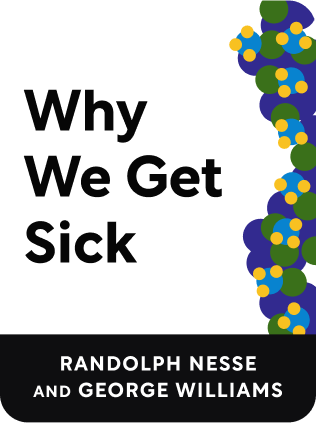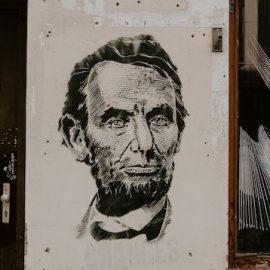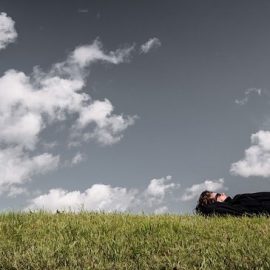

This article is an excerpt from the Shortform book guide to "Why We Get Sick" by Randolph Nesse and George Williams. Shortform has the world's best summaries and analyses of books you should be reading.
Like this article? Sign up for a free trial here .
Why hasn’t natural selection, over millions of years, prevented us from getting cancer, heart disease, and depression? Why do our bodies deteriorate with age? How can Darwinian Medicine help us understand diseases better?
In the book Why We Get Sick, Randolph Nesse and George Williams explain that “natural selection” means that evolution prioritizes reproductive fitness above all else and that evolution doesn’t bother eliminating diseases that affect us later in life. They also discuss reproductive health and aging as they relate to Darwinian Medicine.
Keep reading to learn more about the evolutionary science behind why we get sick.
Why We Get Sick: Explained
After millions of years of evolution, why do our bodies still seem so flawed? Why do we get sick? Why hasn’t natural selection prevented heart attacks, nearsightedness, and Alzheimer’s disease?
The common answer is that “natural selection isn’t powerful enough to get rid of disease.” This is usually the wrong idea.
Instead, it’s important to realize that the body is a bundle of careful compromises. The reason we have diseases today is that the very things that cause disease were helpful for us at one point, or are still helpful for us in certain situations. In this way, evolutionary medicine seeks to understand why we have disease.
Here are four principles of evolutionary medicine.
1) Natural Selection Selects for Reproductive Fitness
Adaptations that net promote reproductive success are selected for, even if they cause disease after the organism reproduces.
In other words, anything that kills or debilitates you after you already raise kids to independence is not strongly selected against. Further, genes that increase your lifetime reproduction will be selected for, even if they reduce your longevity or ‘happiness.’
In an extreme example, Huntington’s Disease is an intimidating disease—patients die between ages 40-60, and it’s autosomal dominant. But because it causes no apparent harm before age 40, all their kids are born, so the disease faces little selection pressure.
Genes that promote eating and fat storage may increase survival and thus reproductive fitness, even at the expense of later heart disease.
2) Behaviors That Seem Entirely Harmful May Have Unobvious Benefits That Improve Fitness
Traits that give an overall fitness advantage, despite increasing vulnerability to some disease, can still be selected for.
- Physical pain is useful—it signals indicating injury, causes you to withdraw from the injuring agent, and stores painful memories to avoid the behavior that caused the injury.
- Morning sickness in pregnancy makes the mother avoid risky foods that might contain toxins.This protects the early fetus from toxins when it is most vulnerable. Then, when the fetus has grown and is less susceptible to toxins, morning sickness subsides.
- Sickle cell allele protects against malaria.
3) Adaptations That Might Have Been Helpful in the Stone Age Are Maladaptive in the Modern Environment
The modern environment is very different from the environment in which humans evolved over millions of years. Genes that were once helpful may cause disease today. Examples:
- Genes that make you engorge on foods helped humans survive famine periods. But in today’s food-abundant world, this leads to nutritional excess and obesity.
- Energy conservation and laziness helped us avoid wasteful activity, but today they get us to sit for most of the day.
- Alcohol addiction was not really a problem until distillation made high-concentration alcohol, and mass markets made alcohol readily available. The trait for alcoholism may have beneficial effects, such as the persistence to seek rewards despite obstacles.
- Nearsightedness—even though 20% of humans are near-sighted, this might not have been a problem in the Stone Age. It only appeared humans starting doing close reading.
- Sadness has the function of stopping you from wasting energy on unlikely goals. For instance, during the Stone Age, you might have received feedback that you’re no good at hunting. This would make you sad and reconsider whether you might do better as a gatherer.
- In the Stone Age, we happily compared ourselves within a tribe of 100. Within this small group of people, you were likely good at something and valued for what you did. This made your life feel purposeful.
- Now, with the advent of mass media, we compare ourselves to the best of 7 billion other people. You find it harder to be particularly good at anything. Compared to sports stars, beautiful models, and dashing entrepreneurs, you may feel average in nearly all respects, and you see your family and friends as similarly inadequate.
4) Lack of Features on Our “Body Wishlist” Often Stem From Tradeoffs We’re Not Aware Of
When thinking about human health, it’s tempting to wish we had near-superpowers, like immortality or the ability to regenerate lost limbs. However, the body is a careful set of compromises. The body needs to balance functions like reproduction, survival, recovery from damage, energy efficiency, growth, and susceptibility to disease.
Why don’t we regenerate limbs? This is a balance of utility vs. maintenance cost. Natural selection has apparently shown us that this type of repair capability is net negative.
For much of human history, losing a limb was likely fatal—a Stone Age man who lost an arm would bleed to death in minutes. If the chance of survival in such a case was low, then there was little point in having the machinery to regenerate limbs. If everyone who had limbs amputated died, then the gene to regenerate arms could not be selected for.
Furthermore, the maintenance costs include not just the energy expended in maintaining the machinery to regenerate limbs, but also an increased rate of cancer. It’s dangerous to let mature, specialized tissue have more than the minimum needed capacity to repair likely injuries.
Why Do We Age?
Senescence has been stable over time. Over the past centuries, the average human lifespan has increased, but the maximum lifespan has not. Despite all our medical advances, humans cannot live past about 115 years.
Theoretically it would be a huge reproductive advantage to maintain health for more time – imagine humans who lived to be 300 and reproduced for 100 years. Why haven’t humans evolved to live longer?
Per evolutionary medicine principles, there must be a competitive equilibrium at play – living longer must confer some compensatory fitness disadvantage, and the inverse is true. The balance is between faster, more aggressive mating (which may necessarily cause decreased longevity) vs. longer lifespan (which may necessarily trade off with decreased fertility).
Animal experiments show that increasing lifespan causes lower and later reproduction. Somehow there is a tradeoff between longevity and vigor. For example, mice on caloric restriction extend their lifespans, but they don’t reproduce. They stay suspended in a pre-reproductive state waiting for adequate food supply.
Sex and Reproduction
In many animals, the male produces sperm and the female produces eggs. This contrasts with hermaphrodite animals, which can produce both sex cells within one organism.
The small size of sperm and large size of eggs make it easier to get sperm inside females, rather than the opposite. It would be much more difficult for a woman to transmit her egg into a male.
The size of the egg and sperm have huge consequences on the mating relationship between males and females:
- Sperm enters the female, and the fetus develops in the female over 9 months. This requires a much larger commitment for females than males.
- Females know for sure the child is theirs, while males don’t. The female could only have produced the egg that led to the embryo inside her, but multiple males could have contributed sperm to the female, so no male is completely sure that the child is theirs. (Shortform note: Of course, this is no longer true with today’s genetic testing, but we’re discussing the history of natural selection here.)
- Males expend little resources when creating a child. Theoretically, a male can have hundreds of offspring in a lifetime, while females can have only 5-6.
- Males compete among each other to have the chance to inseminate the female. Females have the ability to be selective about which males to mate with. Therefore, males compete to show their genetic prowess through feats of strength (such as male elk fighting with their antlers) and showmanship (such as peacock feathers).
- The father can’t guarantee the child is his, while the mother can. Therefore, the man is fearful of being cuckolded and raising a child that is not his. In response, the father shows jealousy and a threat of anger. This is a response that discourages other mates from intruding, and dissuades the mother from straying.
Darwinian Medicine
Darwinian medicine can help us understand the diseases we face.
If something seems like a maladaptation of the body or an error in natural selection, we probably have missed something. Instead, Darwinian medicine asks questions such as:
- Is this trait of human biology adaptive?
- What does the rest of the machinery look like? How can we test our predictions for this machinery?
- If this trait seems undesirable, how could natural selection have allowed it to persist? Is the undesirable aspect the price of a hidden beneficial aspect?
- Could the trait have been helpful during the Stone Age, and only causes disease in modern times?
Darwinian medicine can also help patients. If patients understood the evolutionary bases of their disease, they can have satisfying reasons for why the disease exists. This may prevent patients from feeling that disease is meaningless, and it may inspire hope that there are ways to circumvent the disease.
Diseases of the Modern Age
We are just at the beginning of understanding how the modern environment causes disease. Consider all the following aspects of modern life that would be utterly foreign to our Stone Age predecessors:
- Bright indoor lighting at night that disrupt our sleep cycles
- Jet lag
- Working night shifts
- Working in windowless rooms with little exposure to nature
- Working in large organizations of hundreds or thousands, and societies of millions—this surpasses the small tribes we used to live in by orders of magnitudes.
- Living in a nuclear family, largely separate from our relatives.
In the coming years, we may find a host of consequences resulting from today’s unnatural environment.

———End of Preview———
Like what you just read? Read the rest of the world's best book summary and analysis of Randolph Nesse and George Williams's "Why We Get Sick" at Shortform .
Here's what you'll find in our full Why We Get Sick summary :
- Why evolution hasn't rid humans of all diseases
- How reproductive fitness is more important than overall survival
- How you evolved to dislike the sound of a baby crying






